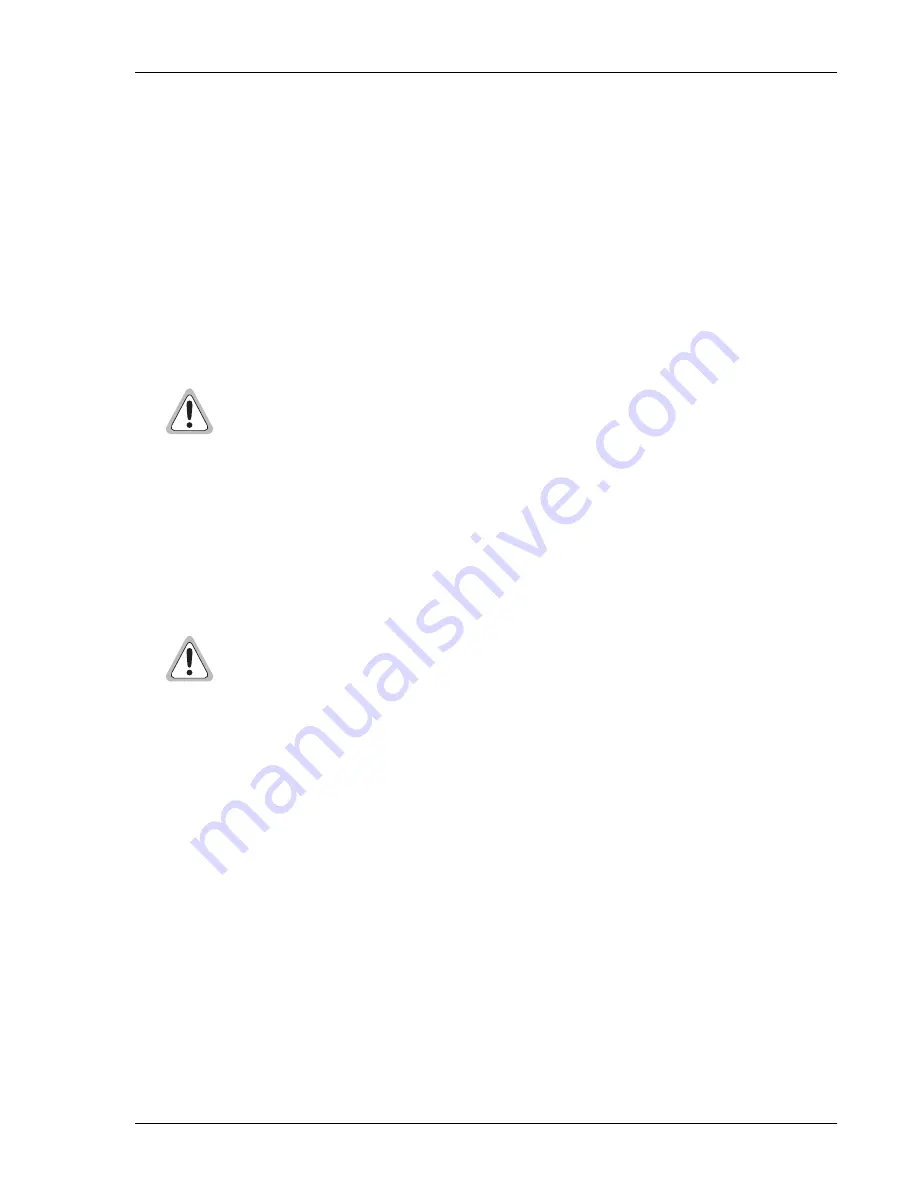
150-712-200-02
Appendix A - Technical Reference
HRE-712 List 1 and List 2
July 26, 2000
21
C
ABLE
S
TUB
AND
P
RESSURIZATION
The HRE-712 List 1 and List 2 enclosures are equipped with a single 30-foot (9.1 m) screened cable stub.
provides a complete description. The stub is available in an HRE-712 List 1 (gel-filled) or List 2
(air-filled).
The stub is secured to the enclosure baseplate by a cable strain-relief adapter. The cable pair is splayed out and
encapsulated in the polyurethane that is poured into the enclosure base. This provides an airtight seal at the cable
entry point.
The HRE-712 List 2 enclosure is pressurized and has an air-inlet tube that accompanies the air-filled stub. The
air-inlet tube connects the inside of the enclosure to the main feeder cable. This tube enables dry air or dry nitrogen
to flow from the main cable into the cable stub through the air-cutoff valve and into the enclosure. The air-cutoff
valve, shown in
, controls the flow through the air-inlet tube. For additional information, refer
“HRE-712 List 2 Air-Filled Stub” on page 3
The pressure-relief valve is not intended to control the pressure that is supplied to the enclosure. The external
network pressure control system, usually located at the front end of the main feeder cable in the servicing CO,
performs this function. The pressure-relief valve should be used as a safety device to limit the maximum internal
pressure in the enclosure.
The HRE-712 enclosures have been safety tested to 36 PSI. This amount of pressure can
severely damage most cables and cable stubs. Pressure above 60 PSI is dangerous because
the V-band is forced away from the flange, impelling the dome away from the housing and
potentially causing damage and injury.
The common pressure supplied through the air core cable is about 9 PSI. This is sufficient
pressure to prevent any water from entering the housing. ADC recommends pressurizing the
enclosure to a maximum of 12 PSI.
The pressure-relief valve is set to release at a maximum pressure of 15 PSI. Due to
manufacturing tolerances of the springs, this maximum 15 PSI pressure has a tolerance of
±3 PSI. This pressure and tolerance are within any safety concerns that might apply to the
housing, personnel, or cable.
















































